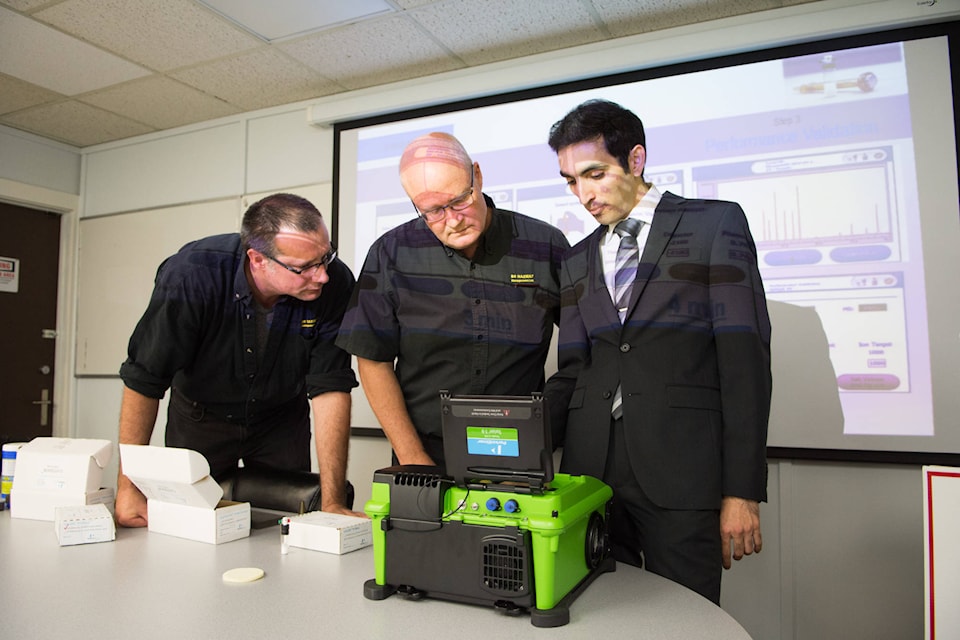Years ago, when David Rogers was a firefighter, he would test for dangerous substances by pouring some onto concrete. If it did not etch the concrete, he would throw a match onto it. If it did not ignite, he would consider the area safe.
Now as the head of BC HAZMAT Management, he is on the lookout for more accurate (and less dangerous) testing solutions to keep people safe, particularly in the wake of the fentanyl epidemic sweeping across Canada.
BC HAZMAT is considering purchasing new testing equipment for unknown chemicals including fentanyl in drugs, which could cost around $100,000. The cost is high, but it’s worth it to Rogers and BC HAZMAT’s clients, which include local first responders and property owners.
John Espley, director of marketing and communications for BC HAZMAT, recalled a recent situation in Central Saanich where two employees from 1-800-GOT-JUNK opened an unmarked canister that contained a chemical used in tear gas. He said they were overcome immediately and began to vomit.
“Those poor guys are rushed off to hospital with no idea what ails them. So we used the current system we have, the Raman laser, to identify the chemical. We called the hospital so they could treat them. Speed is of the essence.”
BC HAZMAT currently uses Raman spectroscopy to detect and identify substances. The machine examines how a sample scatters light and makes a determination, but Espley said that the system can be inaccurate when samples contain more than one substance, such as a heroin sample laced with fentanyl or carfentanyl.
The new system that was demonstrated by representatives from PerkinElmer uses gas chromatography-mass spectrometry, which separates a sample into its different compounds and compares it to known chemicals in a built-in library.
The machine was originally developed for military use when dealing with possible chemical weapons, and was recently used at the Shambhala music festival so attendees could test drugs for safety.
BC HAZMAT could use it when cleaning up drug labs, where chemicals are sometimes used to render other, harmful chemicals inert. However, it is impossible to do without first knowing what the potentially dangerous chemical is.
“Our biggest problem is not the two grains of salt we can see on the table that will kill you, it’s the residue that could be left,” said Rogers.
“Think about a desk with a runner on the side, with that little crease. How do you clean that? — short of taking everything apart or disposing everything.
“Disposing without neutralizing could expose anybody in the disposal system.”
The results from a machine like this cannot be used in court; that requires an accredited lab, but Rogers said that “I don’t care what the accredited lab comes up with in a week, I want to know today.”
reporter@peninsulanewsreview.com
Like us on Facebook and follow us on Twitter
reporter@peninsulanewsreview.com



